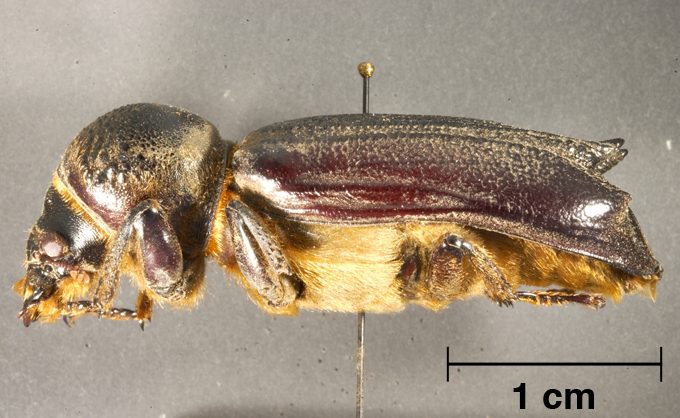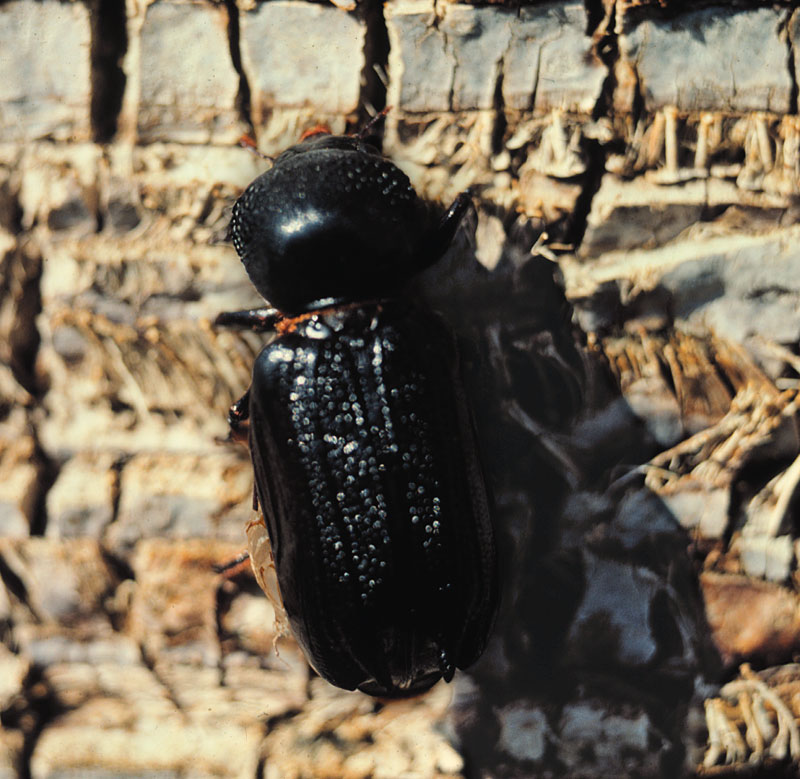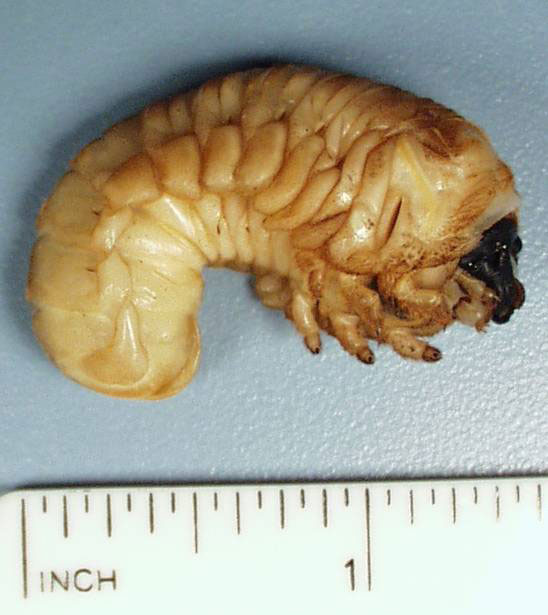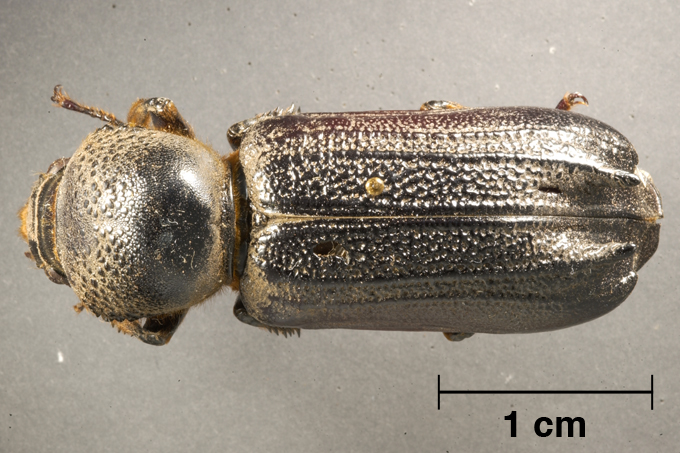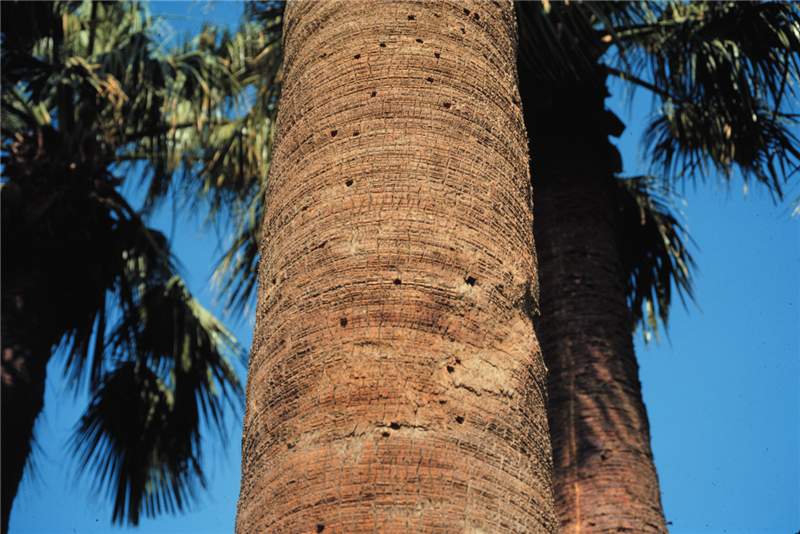Giant Palm Borer
|
adult, lateral view; Photo © Michael Caterino, Santa Barbara Museum of Natural History |
|
adult on Washingtonia filifera; Photo by Timothy K. Broschat, University of Florida, IFAS/FLREC |
|
larva; Photo © PACE Turf, San Diego, CA, www.paceturf.org |
|
adult, dorsal view; Photo © Michael Caterino, Santa Barbara Museum of Natural History |
|
giant palm borer damage to Washingtonia filifera; Photo by Timothy K. Broschat, University of Florida, IFAS/FLREC |
Scientific name
Dinapate wrighti Horn
Family
Bostrichidae
Description
The giant palm borer is by far the largest bostrichid beetle known, with adult beetles reaching nearly 60 mm (2.5 in.) in length. Like other bostrichid beetles, the head is directed downward and is not readily visible from above. The adult beetle is elongate and cylindrical in shape and brown to black in color, while the larvae are stout and C-shaped and yellowish in color. Males are significantly larger than females. Adult females bore tunnels in the soft tissue near the crown of the palm. Males follow them in, mate, and the females then lay around 500 eggs. The larvae hatch and procede to bore galleries as they feed on the inner stem of the palm. The larval stage may last from 3 to 9 years. The larvae pupate in April and May, emerging as adults about two months later. The emergence of adults forms characteristic holes in the trunk of the palm. Adult beetles can only fly short distances.
Diagnostic features
Adult beetles are fairly easy to identify due to their large size and characteristic bostrichid body plan. However, neither larval nor adult palm borers are frequently observed due to the fact that they spend the bulk of their lives buried in the tissue of the host plant.
Distribution
Southwestern USA
Hosts
Palms: primarily Washingtonia filifera (California fan palm), but also found on Phoenix dactylifera (date palm)
Other: none
May be confused with
The larvae may look similar to some weevils and ambrosia beetles, but they are usually larger and have legs.
Additional comments
Giant palm borers are generally thought to be secondary pests of palms, primarily attacking dead or dying plants. They seem to particularly favor transplanted palms.


